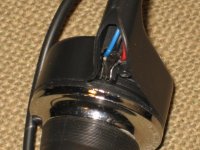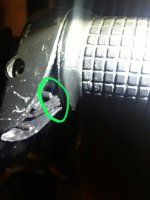Ebike throttles are a major safety hazard. There is no safety or redundancy built in... a single point of catastrophic failure.
A good throttle should have (at least) two position sensing devices (best implemented with two different sensing technologies that generate signals of opposite polarity). The sensor readings should agree with each other to get a valid throttle reading, otherwise shut down the motor. And it's not a good idea to have the decision made in the throttle that feeds a single signal to the controller. The independent sensor readings should be fed to the controller and the controller should make the judgement.
A good throttle should have (at least) two position sensing devices (best implemented with two different sensing technologies that generate signals of opposite polarity). The sensor readings should agree with each other to get a valid throttle reading, otherwise shut down the motor. And it's not a good idea to have the decision made in the throttle that feeds a single signal to the controller. The independent sensor readings should be fed to the controller and the controller should make the judgement.



